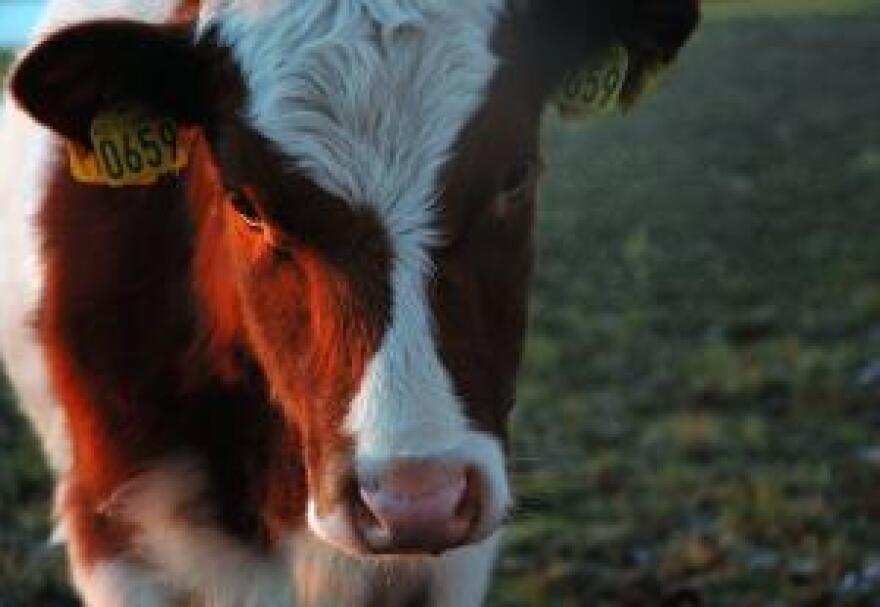Kansas political leaders and top officials at Kansas State University are united in support of a plan to bring the nation's premier agricultural disease laboratory to the K-State campus in Manhattan.
But many people remain uneasy about bringing dangerous pathogens into the nation’s heartland — pathogens that could devastate the livestock industry and possibly harm humans as well.
Those fears surfaced at a Jan. 30 public hearing in Manhattan, Kan., conducted by a committee of the National Research Council. The council, in a report last year, detailed major shortcomings of
U.S. Department of Homeland Security's assessment of risks associated with operating the proposed National Bio and Agro-Defense Facility, or NBAF. The hearing was intended to consider those risks as the council prepares to review a new NBAF risk analysis coming soon.
“I’m just a dumb farmer, but I am scared to death, and I think people should really, really, really look into the dangers and the safety of our community,” Manhattan farmer and rancher Sandy Cravens told the committee.
Cravens and several others think it makes no sense to put such a lab in the heartland. They believe an isolated island, like Plum Island off the East Coast where the lab is currently located, offers an extra layer of protection against the accidental spread of pathogens. That’s why Wabaunsee County, Kan., rancher Stephen Anderson isn’t swayed by promises of jobs and economic development associated with NBAF.
"Jobs, and politics, and patronage should not supersede location, location, location, and the interest of public safety,” he said.
Anderson said many recent disasters can be attributed to three inescapable risk factors: “Human error, mechanical failure, or a catastrophic event of nature—and they were all totally unexpected.”
One risk that’s received a lot of attention is the threat of tornadoes. The original NBAF design would be susceptible to a release of pathogens in the event of an F2 tornado. A much stronger F4 tornado hit Manhattan as recently as 2008. The previous risk assessment called for NBAF to be redesigned to withstand an F2 and possibly an F3 tornado.
Manhattan resident Bill Dorsett said that is inadequate, and an example of cutting corners to save money.
“How can anyone adequately or validly project future Congressional budget cuts?” he said. “The absolutely last thing we need is a budget germ lab, run by the lowest bidder.”
And even if the facility is never structurally damaged by a tornado, a twister could still cause pathogens to be released, according to Tom Manney. The K-State professor emeritus of physics and biology said the design of NBAF would rely on negative air pressure to keep any airborne germs in the secure area. Fans would constantly pull the air into high-efficiency filters, so that air can flow into the research area, but not back out. Manney said a study done in Texas showed that a tornado could easily cause air pressure outside the building to drop so low that the ventilation system would be overwhelmed.
“The tornado — at a distance of a third of a mile — could reduce pressure outside the chamber 50-fold below the inside pressure within a few minutes, and could do this without compromising the structural integrity of the building,” he said.
But that’s a scenario Stephen Higgs has never heard of. He’s the director of research at the Biosecurity Research Institute, a facility already in operation at K-State with many of the same security systems that NBAF would have. At the hearing, he recalled how he was working at a research facility in Galveston, Texas, when a category five hurricane struck.
“You know, all research stops, essentially, in advance of an event like that. All of the agents are put in sealed, locked freezers, or whatever. The labs will be decontaminated before people exit, and then you’re in safe, so it’s not like the agents are up and around,” he said.
Higgs added that any infected research animals would be euthanized, and the remains sterilized.
However, tornadoes tend to strike without much advanced warning. There may well be too little time in the event of a tornado to complete all of those precautions. Supporters of NBAF point out, however, that there’s no way to avoid any and all risks. Landon Fulmer is the policy director for Governor Sam Brownback…
“The fact of the matter is, if we don’t build the NBAF, we put ourselves, our country, our livestock industry at much greater risk than if we do build NBAF,” said Landon Fulmer, policy director for Kansas Gov. Sam Brownback. “The fact of the matter is that naturally occurring outbreaks of these diseases, whether it’s a zoonotic or an (Food and Mouth Disease) outbreak, are completely devastating.”
Fulmer said without NBAF, the United States would have to rely on research done in foreign countries. And in the event of an outbreak, the response time would be slower.
For the moment, Congress is withholding funding for construction of NBAF until an updated risk assessment has been validated by the National Research Council. The panel expects to get its first look at the new risk assessment later this month, and complete its review this summer.
For more NBAF coverage, click here.
Harvest Public Media, based at KCUR, is a collaborative public media project that reports on important agriculture issues in the Midwest. Funded by a grant from the Corporation for Public Broadcasting, Harvest Public Media has reporters at six NPR member stations in the region. To learn more, visit www.harvestpublicmedia.org, likeHarvestPublic Media on Facebook or follow @HarvestPM on Twitter.



